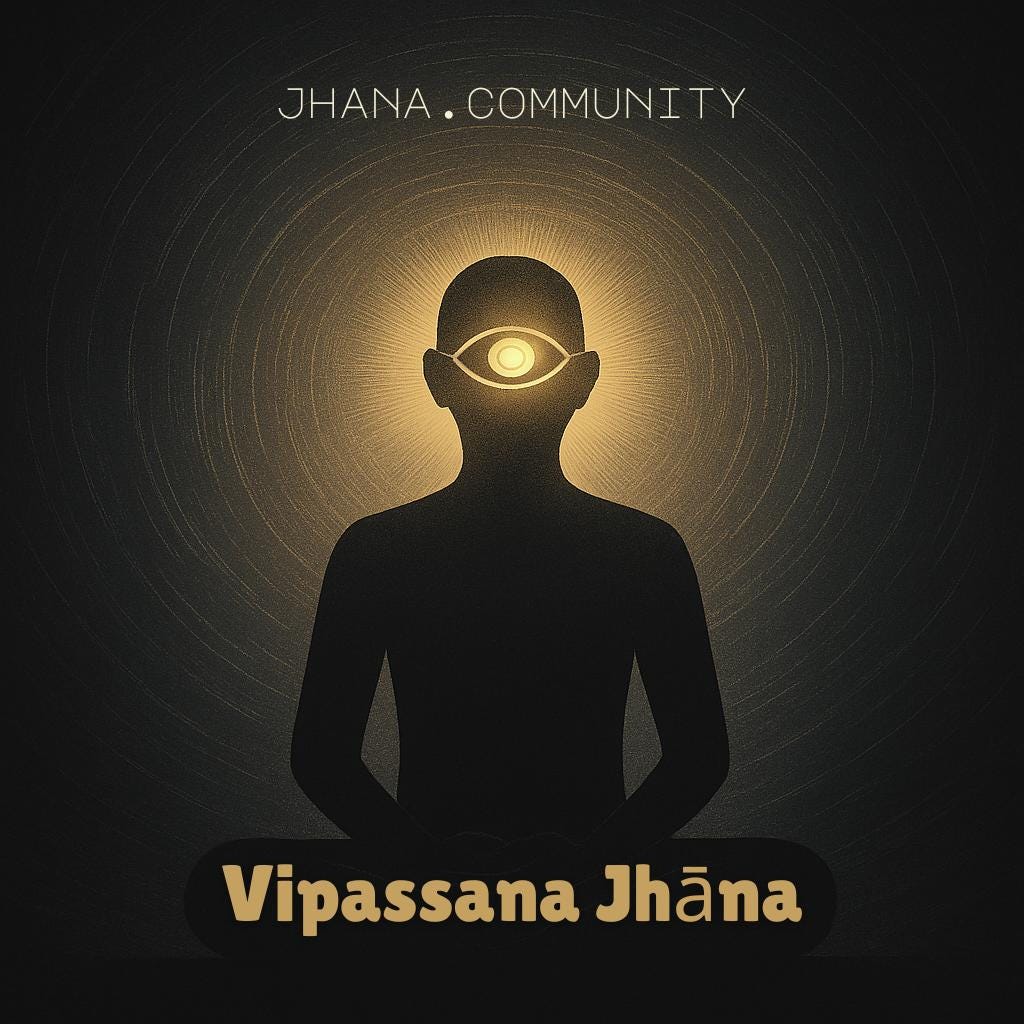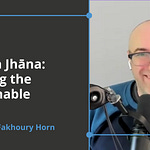Today, in The Jhāna Community, I want to center our exploration around the completion phase—also known as enlightenment.
What is the relationship between enlightenment and jhāna? That’s what we’ll explore.
The Goal of Vipassana Jhāna
In Vipassana jhāna practice, the goal is insight—clearly seeing the way things are. This clear seeing leads to awakening, within the Buddhist frame.
Trudy Goodman uses a beautiful metaphor for this, comparing the phases of insight to the phases of the moon:
“Can we appreciate all the phases of the moon, all the stages of our life? Can we see past the patterns of perception that too often eclipse the wonder of being alive? Birth, growth, fullness, letting go, vanishing into the mysterious dark—these are the eternal cycles of life.”
The completion phase, in this metaphor, is the full darkness of the moon: the vanishing.
Describing the Unconditioned
Early Buddhist texts describe the apex of this phase—Nirvana—as a kind of vanishing. Bill Hamilton, Kenneth Folk’s teacher, once said:
“Nirvana is an experience of the unconditioned which defies any description. Any description of Nirvana is not a description of Nirvana.”
There are no reference points. Concepts can’t contain it. It’s not a “thing.” It’s a different kind of experience.
Bodhidharma, founder of Zen, said:
“When the mind reaches Nirvana, you don’t see Nirvana because the mind is Nirvana.”
Beyond Meditative States
I remember talking with Kenneth Folk about how many meditation teachers end up teaching a state—a temporary condition—as the goal. But awakening is not about achieving and clinging to a special state.
There are moments of direct contact with the unconditioned. But the next moment might involve answering the phone, cooking dinner, or helping someone. At first, these seem like separate domains. Eventually, they can be integrated.
This practice is about learning to release identification with all states—even the expansive and blissful ones.
Wanting to Be “Permanently Okay”
It’s understandable that we want to find a place where we can be permanently okay. That desire comes from a younger part of us—vulnerable and needing security.
But the adult part of awakening is what frees us to be present for life as it is—even the messy, painful, inconvenient parts.
Paradoxically, it’s not what we thought we signed up for. We imagined transcendence. What we found was this—the real.
The Journey Doesn’t End Here
Here’s the good news: the journey doesn’t end at the completion phase. Awakening is recursive. It loops, like the moon’s phases.
“To understand recursion, you must first understand recursion.”
In early Buddhism, the highest achievement was to break out of saṃsāra. But transformation happens not by escaping, but by cycling with change.
Philosopher John Vervaeke says:
“Evolution is revolution with change.”
If your cycles bring new learning, new understanding—that’s evolution.
The Big Picture
That’s the bigger picture I love to teach. Meditation isn’t about escaping life. It’s about working with the natural cycles of our minds and lives—and transforming through them.
And this isn’t in contradiction to Nirvana. When the realization deepens, you see that every experience, every thought, every person is it.
Even the thought, “There’s somewhere else I should be”—that’s it too.
Embodying the Mystery
So what’s the point of all this state-jumping, deconstructing, and releasing?
For me, part of the point is to embody the mystery.
Reggie Ray writes in Touching Enlightenment:
“To be awake, to be enlightened is to be fully and completely embodied… to be entirely present to who we are and to the journey of our own becoming… with no external observer waiting for something better.”
That’s the journey of vipassana jhāna. Nothing left out. Full intimacy with reality.
Awakening Is Collective
Ultimately, awakening isn’t a personal project. Everyone is on this journey—even if they’d never use those words.
Martin Luther King Jr. wrote:
“Injustice anywhere is a threat to justice everywhere. We are caught in an inescapable network of mutuality, tied in a single garment of destiny.”
Awakening leads to the realization that we are in this together.
Eventually, the idea of my awakening dissolves into our awakening.
So Now What?
So the question becomes:
How can I show up fully for this moment—this body, this life, this karmic tangle of heartbreak and hope?
That’s the real practice.
Mastering the Art of Jhāna
If you found this article helpful, you may want to check out the community of practice it arose from…











